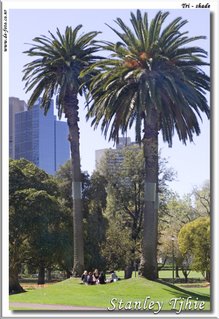
The Royal Botanic Gardens, Melbourne are botanical gardens located near the centre of Melbourne, Victoria, Australia, on the south bank of the Yarra River. They are comprised of 354,000 square metres (35 hectares or 87 acres) of beautifully landscaped gardens. They are widely regarded as the finest botanical gardens in Australia, and among the best in the world.
The gardens are governed under the Royal Botanic Gardens Act of 1991 by the Board of the Royal Botanic Gardens, who are responsible to the Minister for Environment.
In 1846 Charles La Trobe selected the site for the Royal Botanic Gardens from marshland and swamp.
In 1857 the first director was Ferdinand von Mueller, who created the National Herbarium of Victoria and brought in many plants.
In 1873 William Guilfoyle became Director and changed the style of the Gardens to something more like the picturesque gardens that were around at that time. He added tropical and temperate plants.
mportant problems for the Botanic Gardens have included unwanted plant and animal life which interferes significantly with the management of the gardens. There are also problems with water conservation.
Beginning in 2002, the Royal Botanic Gardens has had significant problems managing an increasing population of flying foxes. It culminated in damaged trees and habitat. The Royal Botanic Gardens managed this by moving the flying foxes to Horseshoe Bend in Ivanhoe, and by disturbing the flying foxes and providing a familiar environment.
In regard to weeds (always a problem with a botanic gardens of this size) the Botanic Gardens developed a strategic plan in 2004 to minimise weed infestations by educating the public and management, and to help conserve the indigenous and other species.




No comments:
Post a Comment